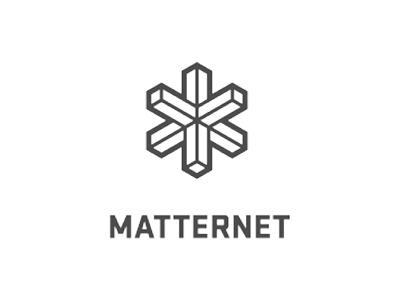MQTT Essentials
The Ultimate Guide to MQTT for Beginners and Experts
MQTT (formerly "Message Queuing Telemetry Transport") is the de facto data exchange protocol for IoT messaging. Standardized by OASIS and ISO, the MQTT publish/subscribe protocol provides a scalable and reliable way to connect devices over the Internet.
MQTT is the most commonly used messaging protocol for the Internet of Things (IoT). MQTT stands for MQ Telemetry Transport. The protocol is a set of rules that defines how IoT devices can publish and subscribe to data over the Internet. MQTT is used for messaging and data exchange between IoT and industrial IoT (IIoT) devices, such as embedded devices, sensors, industrial PLCs, etc. The protocol is event driven and connects devices using the publish /subscribe (Pub/Sub) pattern. The sender (Publisher) and the receiver (Subscriber) communicate via Topics and are decoupled from each other. The connection between them is handled by the MQTT broker. The MQTT broker filters all incoming messages and distributes them correctly to the Subscribers.
HiveMQ wrote the book on MQTT
You’re in the right place for expert guidance and resources whether you’re new to MQTT or building out your IoT platform.
What is MQTT?
The MQTT protocol is the de-facto standard for IoT messaging. Standardized by OASIS and ISO, MQTT publish/subscribe protocol provides a scalable and reliable way to connect devices over the Internet. Today, MQTT is used by many companies to connect millions of devices to the Internet.
Why Companies Use MQTT
It requires minimal resources since it is lightweight and efficient
Supports bi-directional messaging between device and cloud
Can scale to millions of connected devices
Supports reliable message delivery through 3 QoS levels
Works well over unreliable networks
Security enabled, so it works with TLS and common authentication protocols
Key Features
MQTT Clients
MQTT clients publish a message to an MQTT broker and other MQTT clients subscribe to messages they want to receive. Implementations of MQTT clients typically require a minimal footprint so are well suited for deployment on small constrained devices and are very efficient in their bandwidth requirements.
HiveMQ developed a Java-based MQTT client that is available under an open source license.
MQTT Broker
MQTT brokers receive published messages and dispatch the message to the subscribing MQTT clients. An MQTT message contains a message topic that MQTT clients subscribe to and MQTT brokers use these subscription lists for determining the MQTT clients to receive the message.
HiveMQ offers a commercial and open source MQTT broker.
MQTT QoS (Quality of Service) Levels
MQTT implements 3 quality of service levels for agreement between the sender and receiver:
1) At most once (0),
2) At least once (1), and
3) Exactly once (2).
These QoS levels allow for more reliable IoT applications since the underlying messaging infrastructure and adapt to unreliable network conditions.
Persistent Sessions
MQTT allows for a persistent session between the client and the broker. This allows for sessions to persist even if the network is disconnected. Once the network is reconnected, the information to reconnect the client to the broker still exists. This is one of the key features that makes the MQTT protocol more efficient than HTTP for use over unreliable cellular networks.

Retained Messages
MQTT clients that subscribe to a new topic have no insight into when to expect the first message they will receive. However, an MQTT broker can store a retained message that can be sent immediately upon a new MQTT subscription. In this case, the MQTT client will receive at least one message upon subscribing to the topic.

Last Will and Testament (LWT)
An MQTT client can specify to an MQTT broker a message, called the last will, that will be sent if the MQTT client ungracefully disconnects. This allows for a more graceful system wide notification that a client has been disconnected.
MQTT Basics: What is MQTT and How Does it Work?
Chapters
- 00:00 - Introduction
- 00:26 - What does the acronym MQTT stand for?
- 01:07 - What does MQTT do?
- 02:13 - Publish-Subscribe Pattern
- 02:50 - MQTT Architecture
- 04:50 - MQTT enables IoT
- 05:50 - Conclusion
MQTT Basics
MQTT is the most commonly used messaging protocol for the Internet of Things (IoT). MQTT stands for MQ Telemetry Transport. The protocol is a set of rules that defines how IoT devices can publish and subscribe to data over the Internet. MQTT is used for messaging and data exchange between IoT and industrial IoT (IIoT) devices, such as embedded devices, sensors, industrial PLCs, etc. The protocol is event driven and connects devices using the publish / subscribe (Pub/Sub) pattern. The sender (Publisher) and the receiver (Subscriber) communicate via Topics and are decoupled from each other. The connection between them is handled by the MQTT broker. The MQTT broker filters all incoming messages and distributes them correctly to the Subscribers.
MQTT Tutorial
MQTT Essentials Part 1
MQTT Essentials Part 2
MQTT Essentials Part 3
MQTT Essentials Part 4
MQTT Essentials Part 5
MQTT Features
MQTT is packed with features, such as Quality of Service (QoS) levels, persistent session and queuing messages, Retained Messages, etc.
MQTT vs. Other IoT Protocols
Which protocol is the right choice for your IoT requirements? Check out these valuable resources.
MQTT Essentials
MQTT Essentials
MQTT Essentials
MQTT Essentials
MQTT Essentials
MQTT Essentials
More on MQTT
Learn more about MQTT and MQTT brokers.
Explore MQTT control packets, the core of IoT communication. Learn their structure and types to design and test MQTT-based systems.
In-depth comparison of open-source Vs. commercial Vs. cloud MQTT brokers for IoT/IIoT devices and applications.
Learn how MQTT Broker Clusters are essential for high availability and scalability to solve the critical part of a messaging infrastructure.
Learn how to find matching subscriptions among millions of MQTT subscribers.
Learn to send and receive MQTT messages directly in a browser.
Learn how to set up an MQTT broker, how to choose the right one for your IoT/IIoT use case & more with this guide.
Learn how to set up an MQTT client and a broker connection in Java.
Learn how to set up an MQTT client and a broker connection in JavaScript.
Learn how to set up an MQTT client and a broker connection in C.
Learn how to set up an MQTT client and a broker connection in C Sharp.
Learn how to set up an MQTT client and a broker connection in Python.
Top 15 frequently asked questions or FAQs about MQTT protocol, such as does MQTT work with Apache Kafka, does MQTT require internet, etc.
Compare HiveMQ’s scalability and clustering with Mosquitto’s lightweight design to choose the right MQTT broker for your application needs.
Compare HiveMQ vs. AWS IoT Core on scalability, MQTT compliance, integrations, security, and vendor lock-in to choose the best IoT messaging platform.
MQTT Glossary
Get to Know the Key MQTT Terminologies at a Glance
Case Studies
Get the help you need.
Ask our experts or learn more about MQTT as you work to connect, communicate, and control your IoT data.


